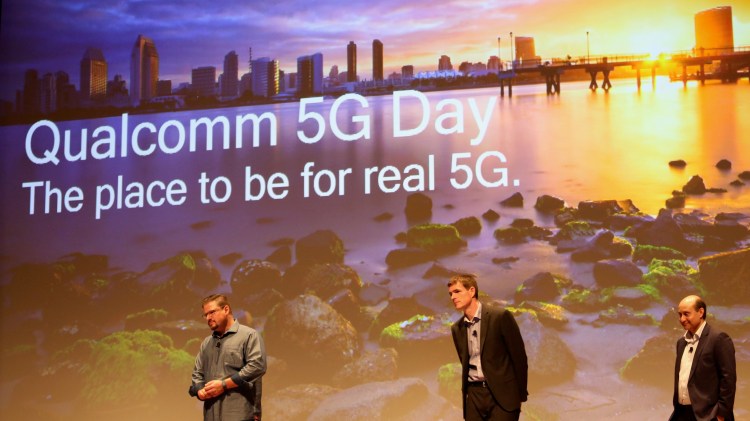As Qualcomm’s second annual 5G Day progressed yesterday, I officially went from “cautiously optimistic” about next-generation 5G cellular technology to “genuinely excited.” Qualcomm offered enough specific technical details and demo results to make the abstract idea of new 5G devices feel concrete — and legitimately near-term.
You may have already read my story this morning detailing the 19 device manufacturers and 18 carriers that are using Qualcomm’s X50 modems to prepare for 2019 launches, but Qualcomm shared lots of additional information that’s worth telling you about. So here are the 10 biggest details you need to know about the future of cellular networking, straight from 5G Day.
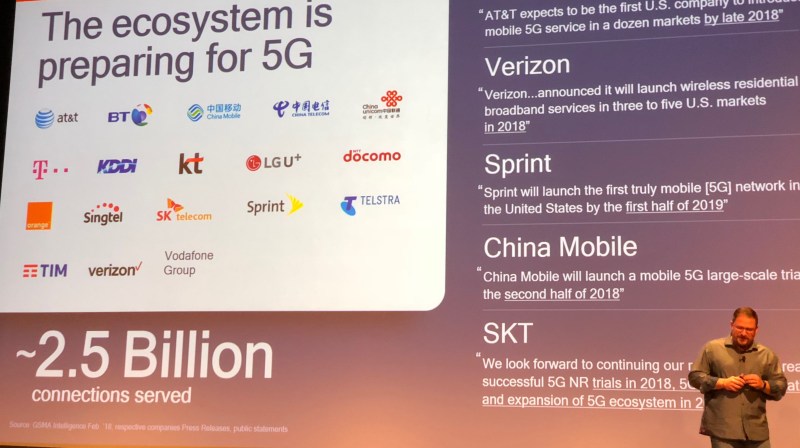
Above: Qualcomm president Cristiano Amon announces that 19 manufacturers and 18 carriers will be using X50 modems to roll out 5G devices to customers in 2019.
1. 5G is real, and coming sooner than you think
Put aside AT&T’s and Verizon’s promises of initial U.S. 5G deployments in 2018 — they’re going to happen, but unless you want to own an early 5G wireless hotspot (AT&T) or 5G wireless broadband modem (Verizon), they’re not going to be life-changing. The real excitement starts in 2019 when all four U.S. carriers and many others across the world will be actively building out their 5G networks, supported by early 5G phone and mobile device users. And it is really exciting: By roughly this time next year, companies will be showing off over a dozen 5G phones, and preparing to release game-changing 5G devices.
2. Speed and reliability will be 5G’s big selling points
Just like 4G/LTE, which evolved over time from “better than 3G” to “generally quite good,” 5G will start by offering key improvements over 4G and get a lot better over time. The early consumer selling points will be roughly 5Gbps download speeds and 1-2 millisecond latency — think “never wait for a web page to load again” levels — plus the reliability of simultaneous 5G and 4G connections. It’s anticipated that 5G devices won’t just drop off the network in areas of weak signal; rather, they’ll leverage existing 4G networks to guarantee service.
June 5th: The AI Audit in NYC
Join us next week in NYC to engage with top executive leaders, delving into strategies for auditing AI models to ensure fairness, optimal performance, and ethical compliance across diverse organizations. Secure your attendance for this exclusive invite-only event.
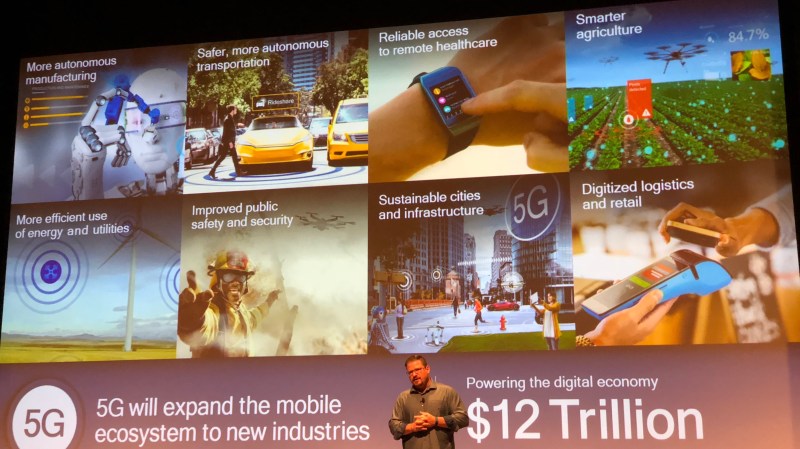
Above: Qualcomm president Cristiano Amon explains some of the new industries 5G networks will touch, on February 7, 2018.
3. New use cases will excite a lot of people
Will grandma need 5G? Unless she lives in a rural area that 4G struggles to reach — which 5G is expected to finally serve — the answer is “probably not.” But fans of videos, video games, cars, and working from home are going to be blown away by what 5G offers, particularly as it’s expected to be based on unlimited data plans from the start. Although Qualcomm executives said that they’re watching as real-world 5G use cases develop, it expects that demand for fast, high-quality video streaming will drive early 5G adoption, as every 5G device will be a full-fledged TV screen and tuner.
VR could get a huge bump from 5G. Qualcomm expects photorealistic wireless virtual reality headsets to follow phones, using cloud processing to hand off pre-computed visual data that goggles will adjust for the wearer’s current position; HTC is one of the X50 modem’s first customers. Later, self-driving cars will benefit from everything from vehicle-to-everything (V2X) communications for safety to live videostreaming entertainment. And the range of work-from-home jobs will expand as previously impossible industries become capable of wireless online remote control.
4. Early 5G devices will probably experience excessive battery drain
I was among several writers to raise concerns about how early 5G devices will efficiently handle simultaneous 4G and 5G connections, as well as other power inefficiencies like the ones that brought HTC’s first LTE phone to its knees. Qualcomm’s representatives all but shrugged, saying that they’ll do their best to minimize battery drain, but that smartphone makers might want to consider slightly thicker devices with bigger batteries to mitigate the issue.
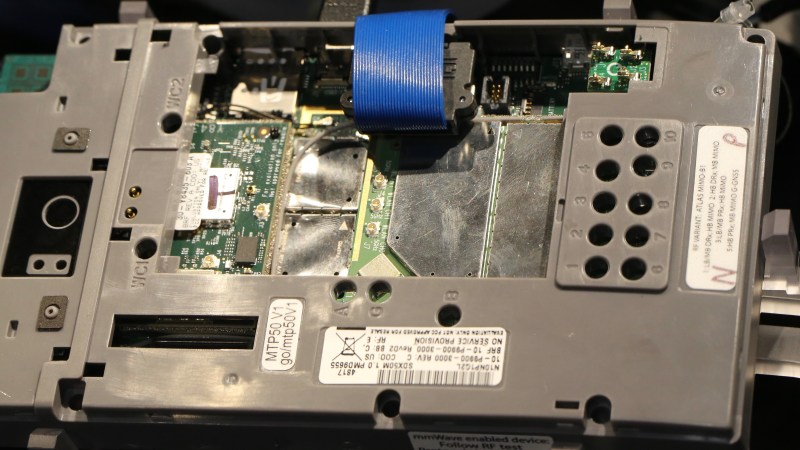
Above: Qualcomm’s Snapdragon X50 5G is the first 5G modem for consumer mobile devices, shown here in oversized prototype form on February 7, 2018.
5. Expect some early (and maybe later) 5G devices to suffer ‘Antennagates’
Today, mobile devices tend to have two or four cellular antennas, but the number is set to increase with 5G: Base stations may well have 128 or 256 mini-antennas, and phones will have between two and 10 mini-antennas. Qualcomm executives expressed some concern over the potential for signal attenuation, particularly with mmWave phones, based on hand, head, and body positions. Another way of putting this is that absent universal agreement on what it means to “hold a phone wrong,” early 5G phones that aren’t engineered perfectly may see radically different speeds based on the way they’re held.
6. Apple isn’t on board yet, but can it afford not to be?
Given the international legal battle currently underway between Apple and Qualcomm, it’s no surprise that Apple wasn’t specifically mentioned during the event. Qualcomm briefly noted the absence of a couple of top manufacturers from its current list of partners, mentioning that one would likely never confirm its use of Qualcomm parts and the other might only do so belatedly — seemingly referring to Apple and Samsung, respectively. Executives also noted that while 19 OEMs were on board, some companies might make the business decision to wait on 5G, believing that their customers don’t care. That also sounded like an opaque Apple reference.
Can Apple afford to wait for 5G? That’s really up for debate. When the 3G and 4G transitions were taking place, Apple was not the leading smartphone maker in the world; today, it’s locked in a quarterly struggle with Samsung for the No. 1 spot and dependent on iPhone sales for most of its revenue. Not having a 5G phone while all of its competitors are touting 5G could affect iPhone sales.
However, it’s entirely possible that Apple has a path forward with Intel or Samsung 5G modems. Apple is also probably working on its own 5G modem, though there are major risks in relying entirely on an end-to-end Apple-developed solution given all the differences in spectrum, antenna, and chip performance 5G is bringing. This topic is a big TBD for the time being.
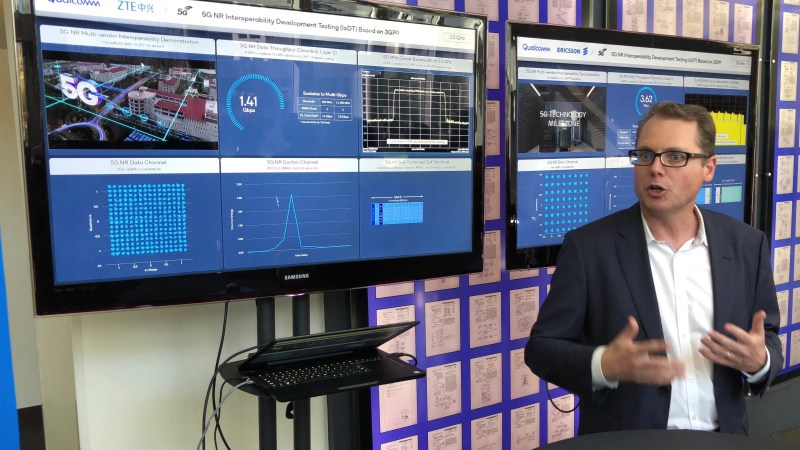
Above: Qualcomm VP of engineering John Smee shows results of 3.5GHz frequency testing by partner ZTE, including 1.4Gbps speeds, on February 7, 2018.
7. Qualcomm’s performance lead could be considerable — or nothing
To assess what Apple and other non-Qualcomm manufacturers might deal with, I posed the following question to Qualcomm executives: We’ve seen a significant performance difference between Qualcomm and Intel 4G/LTE modems, so what sort of performance differences can we expect between the companies’ products in 5G? Qualcomm’s cheeky answer: 19 companies are already building products with our 5G modem, versus Intel’s announced 0, and in contrast to the well-specified X50, no one’s sure what Intel’s modem will be able to do. The gap could be significant or nothing.
Qualcomm didn’t speculate, but pointed out that the 5G standardization process has seen some debate over millimeter wave requirements — Qualcomm has pushed for a more powerful mmWave standard, while an unnamed rival has been trying to weaken it. The suggestion is that Qualcomm’s ready to deliver great performance, and competitors may not be.
More than anything, Qualcomm’s event presented so many demos across so many 5G areas — different radio frequencies, different devices, different applications — that one gets the sense that almost any wireless chip maker determined to go it alone in 2018 will be in trouble. Something’s going to get left out or underspecified, and the days of brute-forcing cellular solutions with multiple chips are over; there’s no space in ever-shrinking devices.
8. Your relationship with social networks and the cloud could change
Qualcomm only briefly touched upon these, but they’re food for thought: What happens when cellular bandwidth and latency let your phone access remote data as if it’s stored on the device? Prior to the event, it was optimistically suggested that phone makers might be able to save money by equipping 5G phones with less storage, because they’ll be able to go straight to the cloud to instantly download anything you might want to store.
A separate, less concrete suggestion was made that 1-2ms latency could radically change users’ interactions with social networks. Qualcomm offered no specifics on what this would entail, but you could deduce that users might allow themselves to be persistently “available” to friends, family, and/or followers, with the ability to share and receive video or VR content at any time. There’s interesting potential here.
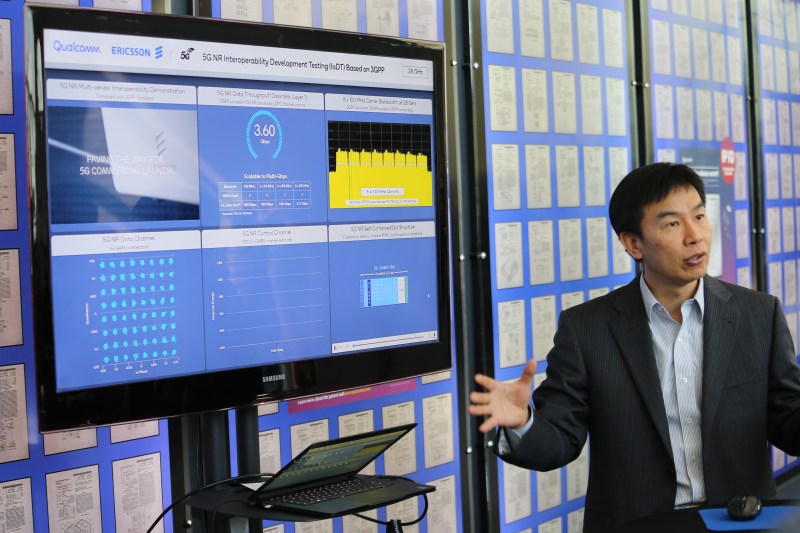
Above: Qualcomm’s OEM partner ZTE shows off 28GHz frequency 5G test results, including 3.6Gbps download speeds, on February 7, 2018.
9. 5G will be more ubiquitous, but 4G will expand, too
Today, 4G networks almost guarantee that customers can get wireless phone access across the entire United States — apart from individual network-specific coverage holes and continued issues with rural areas. 5G is going to go broader and much deeper: Carriers and cable providers alike have announced their intention to offer 5G service in rural areas that missed out on 4G, and 5G will not only penetrate more buildings on its own, but also benefit from a lot more routers to bring billions of new IoT devices onto the network.
The surprise with the 5G transition is that some carriers will continue to operate robust 4G networks after 5G rolls out, both as backbone reliability for 5G and as increasingly superior 4G solutions. As people move their heavy data demands off of 4G to 5G towers, the 4G towers’ performance will start to improve for customers who remain on LTE. And LTE hasn’t finished improving yet. A lot of the initial 5G deployments will include state-of-the-art 4G chips and antennas that will boost LTE speeds up to better than current, but still sub-5G, levels.
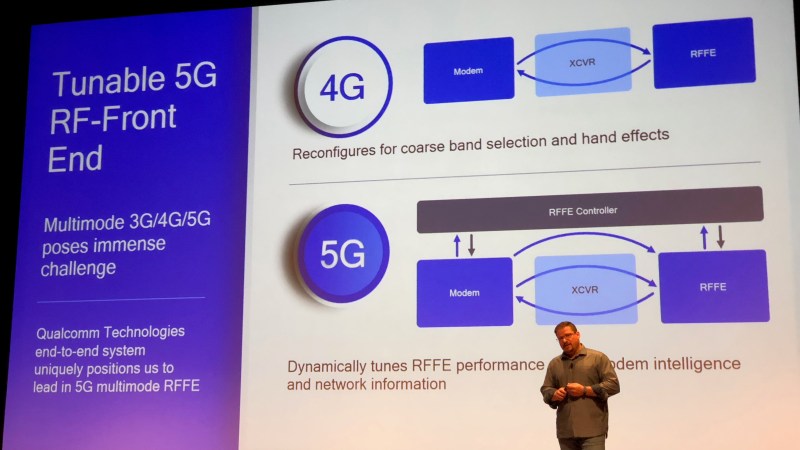
Above: Qualcomm president Cristiano Amon addresses media and analysts at 5G Day on February 7, 2018, spotlighting the company’s dynamic radio tuning hardware, which can be adjusted to meet the specific 5G frequencies and bandwidth allocated to carriers in a given region.
10. Global vs. regional design hasn’t been settled
Single-SKU, truly global cellphones aren’t common — it’s far more often the case that a phone is released in regionally optimized versions that can roam in most but not all areas overseas. As standardization and wireless spectrum allocation are both still underway across the world, Qualcomm isn’t yet sure whether 5G phones will wind up being global or regional. Ideally, they’d be global, making testing, manufacturing, and distribution a lot easier for everyone.
An early read: Don’t hold your breath for a truly global 5G phone. Qualcomm suggested that 5G devices might initially be differentiated by either including or excluding mmWave support, but even that’s not clear yet. Similarly, some devices could wind up being limited by their ability to work on specific frequency ranges, as carriers have discussed 5G rollouts across low, mid, and ultra-high frequencies. We’ll have to wait and see how this shakes out.
Qualcomm paid my way to 5G Day. Our coverage remains objective.
